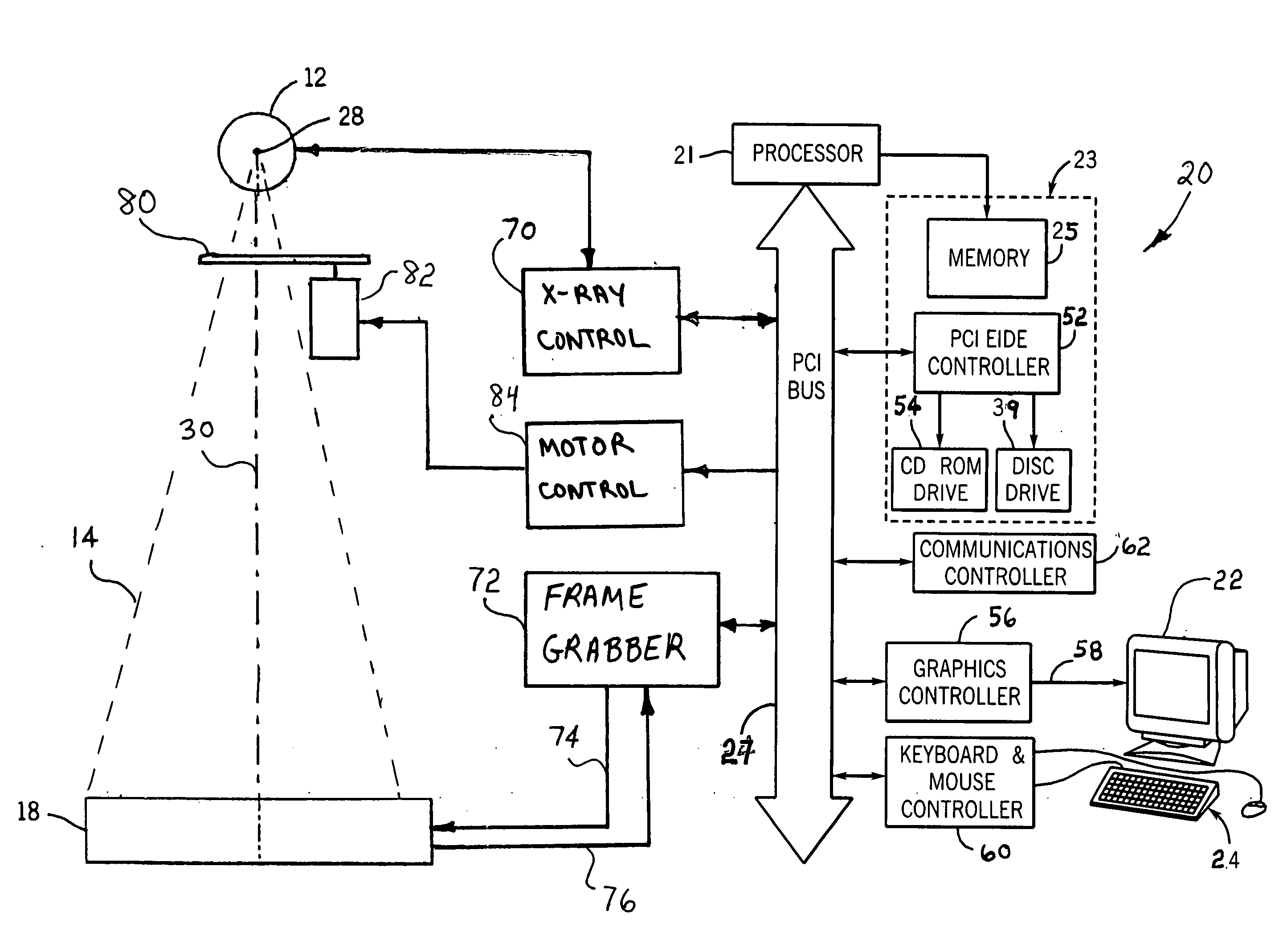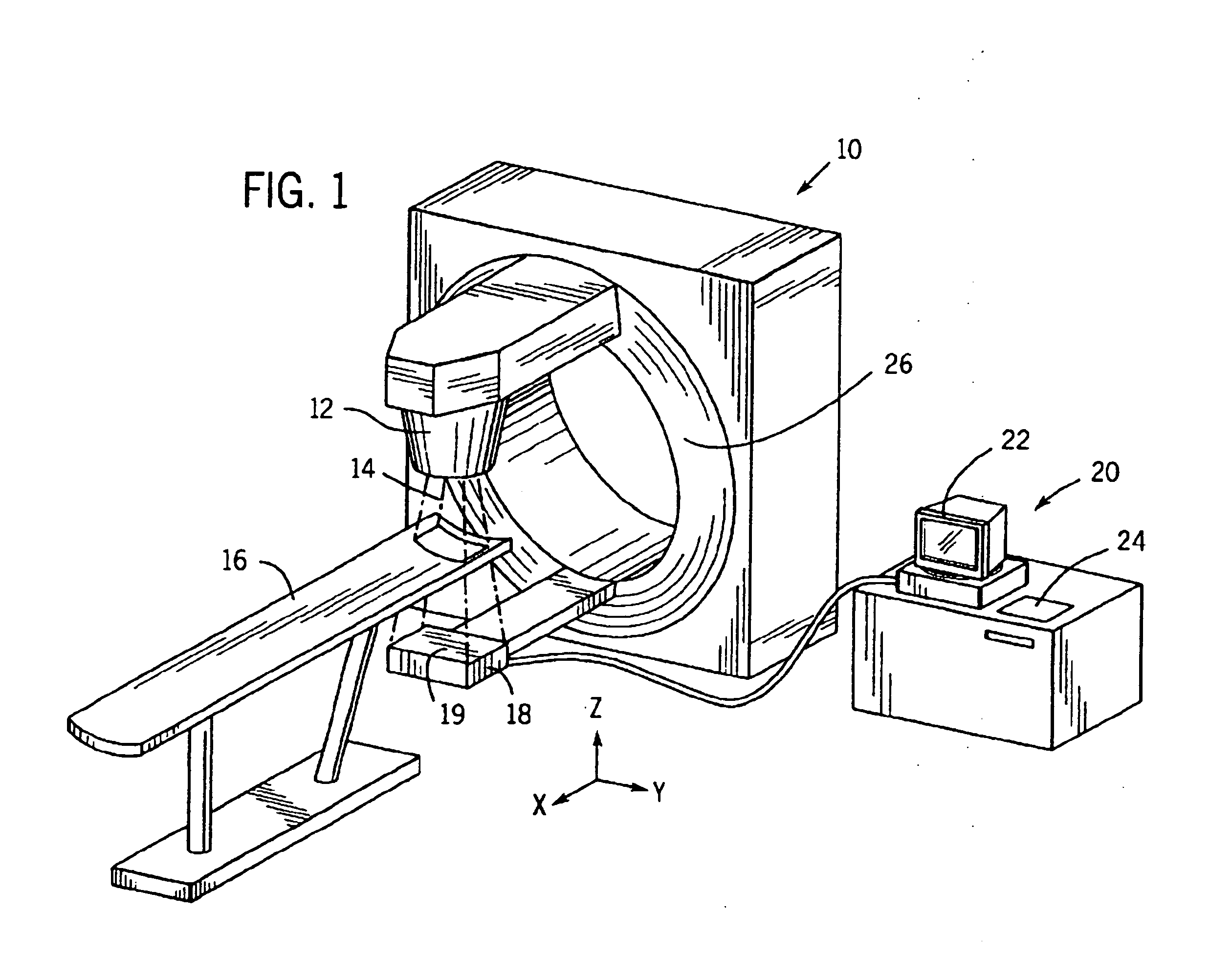Portal imaging using modulated treatment beam
a beam and treatment beam technology, applied in the field of radiation therapy equipment, can solve the problems of irradiating a significant volume of non-tumorous or healthy tissue, affecting the quality of life of patients, so as to achieve the effect of improving quality
- Summary
- Abstract
- Description
- Claims
- Application Information
AI Technical Summary
Benefits of technology
Problems solved by technology
Method used
Image
Examples
Embodiment Construction
[0021] Referring to FIG. 1, a radiation therapy system 10, suitable for use in the present invention, includes a radiation source 12 producing a radiation beam 14 directed across a patient support table 16 that may hold a patient (not shown) or a calibration phantom 32 (shown in FIG. 2). The radiation beam 14 may be a megavoltage x-ray beam (e.g., 6-10 megavolts) or other photon source suitable for radiation therapy. The radiation beam 14, as shown, is collimated to a fan shape; however, the invention is equally applicable to “cone beams” of radiation.
[0022] After passing through the patient support table 16 and either the patient or a calibration phantom 32, the beam 14 is received by an electronic portal imaging device (EPID) 18 having a detector surface 19 corresponding to the cross-sectional area of the beam 14. EPID 18 produces electronic signals providing measurements of the dose of the radiation received at regularly spaced positions, or pixel locations over the detector sur...
PUM
 Login to View More
Login to View More Abstract
Description
Claims
Application Information
 Login to View More
Login to View More - R&D
- Intellectual Property
- Life Sciences
- Materials
- Tech Scout
- Unparalleled Data Quality
- Higher Quality Content
- 60% Fewer Hallucinations
Browse by: Latest US Patents, China's latest patents, Technical Efficacy Thesaurus, Application Domain, Technology Topic, Popular Technical Reports.
© 2025 PatSnap. All rights reserved.Legal|Privacy policy|Modern Slavery Act Transparency Statement|Sitemap|About US| Contact US: help@patsnap.com



